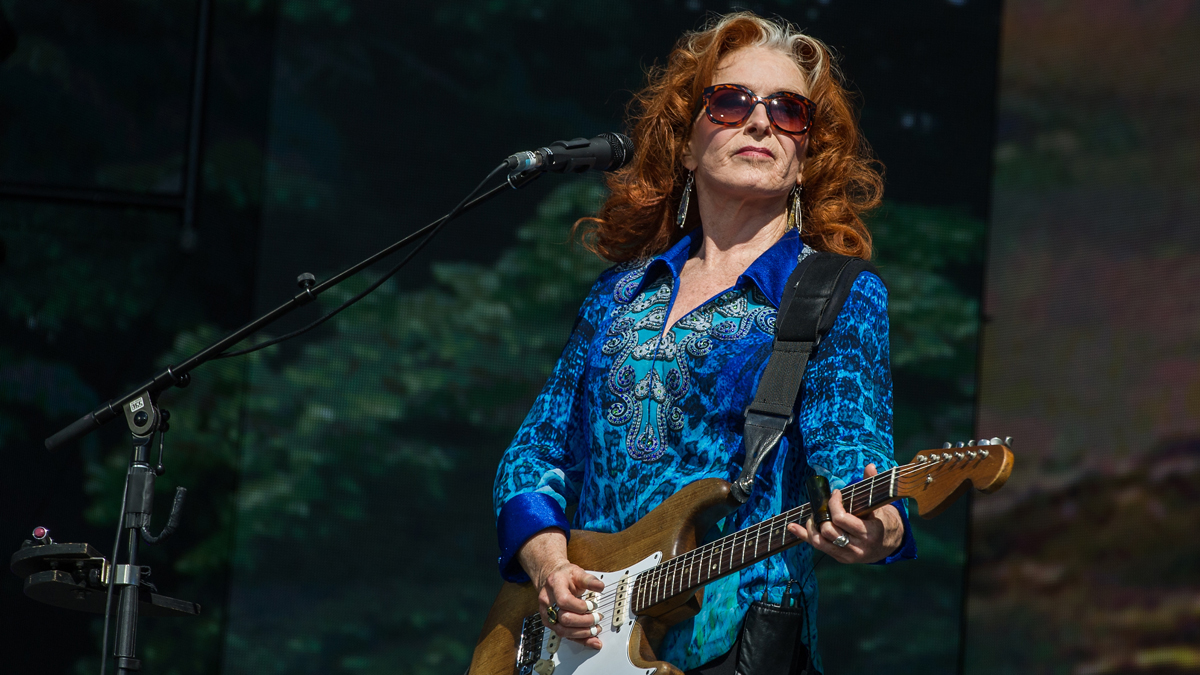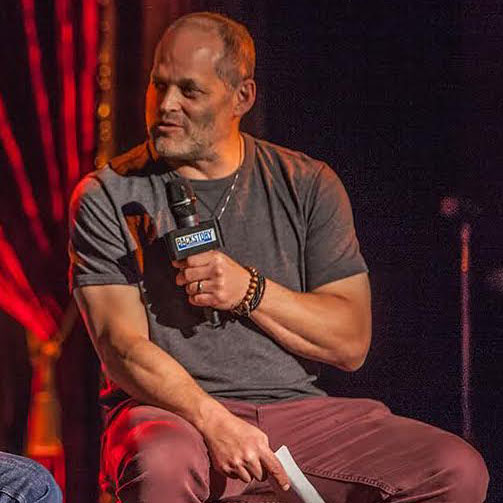Bonnie Raitt: “I didn't see anybody play slide, so I just figured it out in my room – and I put the bottleneck on the wrong finger!”

Rock and Roll Hall of Famer Bonnie Raitt returns to some of her beloved musical and lyrical themes on Just Like That…, her first new album in more than six years. Her familiar smoky voice and biting slide guitar that still manage to cut to the bone – not to mention soothe the soul.
But Raitt also stretches out on the album, and at its emotional core are four songs she wrote herself, each of which finds her taking different musical and lyrical approaches.
Especially noteworthy are Living for the Ones, which pays rocking tribute to the friends and family she’s lost in recent years, and Waiting for You to Blow. The latter is a jazzy funky romp that takes a humorous look at a serious subject: remembering that every sober person is living one day at a time.
“Getting sober was the biggest life change I ever had,” Raitt says, adding that, even decades later, she still feels like there’s a “little devil” on her shoulder.
“It’s just waiting for me to blow, and you're just one step away from the whole thing caving in,” she says. “I’m not really even talking about substance abuse, but about recovery from letting yourself slip into those morasses of self-doubt and pitying and victimhood – behaviors that aren't really righteous.“
Waiting for You to Blow takes a serious subject and comes at it from an interesting angle – and with some really cool, upbeat music.
“I always try to do something I haven't done, and songwriters are often sending me things that are exactly like I Can't Make You Love Me or Something to Talk About. Why would I want to repeat myself? This is my 21st album, so I've said a lot of things about love from different angles.
Get The Pick Newsletter
All the latest guitar news, interviews, lessons, reviews, deals and more, direct to your inbox!
“I wanted to do something that was out of my comfort zone, so I wrote some music that was a hybrid of funk and jazz that I've heard in my head. I started with a funk drum track, which I’ve never done before, then played jazzy chords over it. Then I did all these little horn parts that ended up being played on organ and guitar.
“The whole arrangement was conceived in my head, including the shuffle bridge, which is a little unusual as well. I've learned from Randy Newman and Mose Allison, in particular, to write about a serious topic [with some] satirical humor, a humorous point of view. I think it gets the point across better. I also felt like I stretched out on Down the Hall and Waiting for You to Blow. Those were beyond my usual wheelhouse.”
I also enjoy the acoustic-based songs.
“Those are great, but I wasn't worried about doing a story song with fingerpicking, which is the style of folk music that made me learn the guitar in the first place, listening to Joan Baez, Odetta and early Bob Dylan.
“There's an immediacy and an intimacy about those songs [that are] mostly sung with one voice and one instrument, which also takes me back to Jackson Browne and John Prine’s first albums, which I adore.”
Does that nice fingerpicked acoustic guitar come back easily – or do you have to work to get it back?
“It never went away! I'm basically a folk music artist, and I accompanied myself alone for years. Most records have had one or two acoustic songs, and fingerpicking is the only style of guitar playing I know. I don't know how to flatpick at all. I also do a lot of benefits, and [going] through two years of Covid mostly meant being alone again. It was fun to revisit the songs in that way.”
Was there any one artist or record that swung you away from solo fingerpicking and toward electric slide?
“I was always also into Fats Domino, Chuck Berry, Smokey Robinson and Ray Charles. I didn't really hear slide guitar till I was 14 or 15. I didn't get to see anybody play it, so I just figured it out in my room. I taught myself to play, so my hand positions aren’t 100 percent correct – and I put the bottleneck on the wrong finger.”
There is no wrong finger!
“You can play more if you have it on your ring finger. Fred McDowell used his little finger, but by then I was already down the road with it on my middle finger. I heard Robert Johnson and just tried to make myself sound exactly like whatever he was doing.”
Was he the first guitarist who made you pick up a slide?
“I heard John Hammond's slide guitar first, then Little Red Rooster and Elmore James. The Rolling Stones were my first exposure to real slide guitar, but the blues guys really fired me up.”
Let’s talk about how some different slide players influenced you, starting with Ry Cooder.
“Ry is still a god to me. Ry and Lowell George are the biggest influences on my playing. I love the Delta blues: Son House, Fred McDowell, Robert Johnson, Johnny Shines, John Hammond. But Ry wrote the book on making it sound like your voice, which is what I try to do. He and Stevie Ray Vaughan are the greatest guitar players I've ever heard.”
How did Lowell impact you?
“He showed me how to use a compressor to let the note last longer, and that really impacted my slide style. I already kind of had my own style and was playing electric, but I wanted to know how he got the note to hold. Lowell was just remarkable. I can't come close to Ry or Lowell, but their lyricism has continued to be an incredible inspiration to me.
“I had never heard anybody like Little Feat when a friend played me Sailing Shoes – and I just about fell over. I loved them so much. And the first two Taj Mahal records are right up there in the pantheon of people that have taken blues and reinvented it and pushed it someplace new.”
That first Taj record inspired Duane Allman to learn slide. Was he a big influence?
“Not really – it's a totally different style of slide playing. But I really loved what he did. I loved the English guys, and Johnny Winter was terrific. There was a lot of slide playing at the time, and I’ve always gone crazy for it.”
What about David Lindley?
“Oh, he’s great. Another different style of slide: lap slide is a different instrument. I mean, there's so many I love: Sonny Landreth, Roy Rogers, John Mooney. Derek Trucks is taking [slide guitar] to a whole other level now.”
In what way?
“His cuts, and his facility to go anywhere, including Indian ragas. He will play such inventive notes. It's almost like when bebop first started. Not that he plays that style, but he's reinvented a lot of the ways that guitar can be used. He just goes places where I never heard anybody take it. To me, he has endless creativity and soul – and his tone is ridiculous.”
- Just Like That… is out now via Redwing Records.
Alan Paul is the author of three books, Texas Flood: The Inside Story of Stevie Ray Vaughan, One Way Way Out: The Inside Story of the Allman Brothers Band – which were both New York Times bestsellers – and Big in China: My Unlikely Adventures Raising a Family, Playing the Blues and Becoming a Star in Beijing, a memoir about raising a family in Beijing and forming a Chinese blues band that toured the nation. He’s been associated with Guitar World for 30 years, serving as Managing Editor from 1991-96. He plays in two bands: Big in China and Friends of the Brothers, with Guitar World’s Andy Aledort.
“His songs are timeless, you can’t tell if they were written in the 1400s or now”: Michael Hurley, guitarist and singer/songwriter known as the ‘Godfather of freak folk,’ dies at 83
“The future is pretty bright”: Norman's Rare Guitars has unearthed another future blues great – and the 15-year-old guitar star has already jammed with Michael Lemmo











